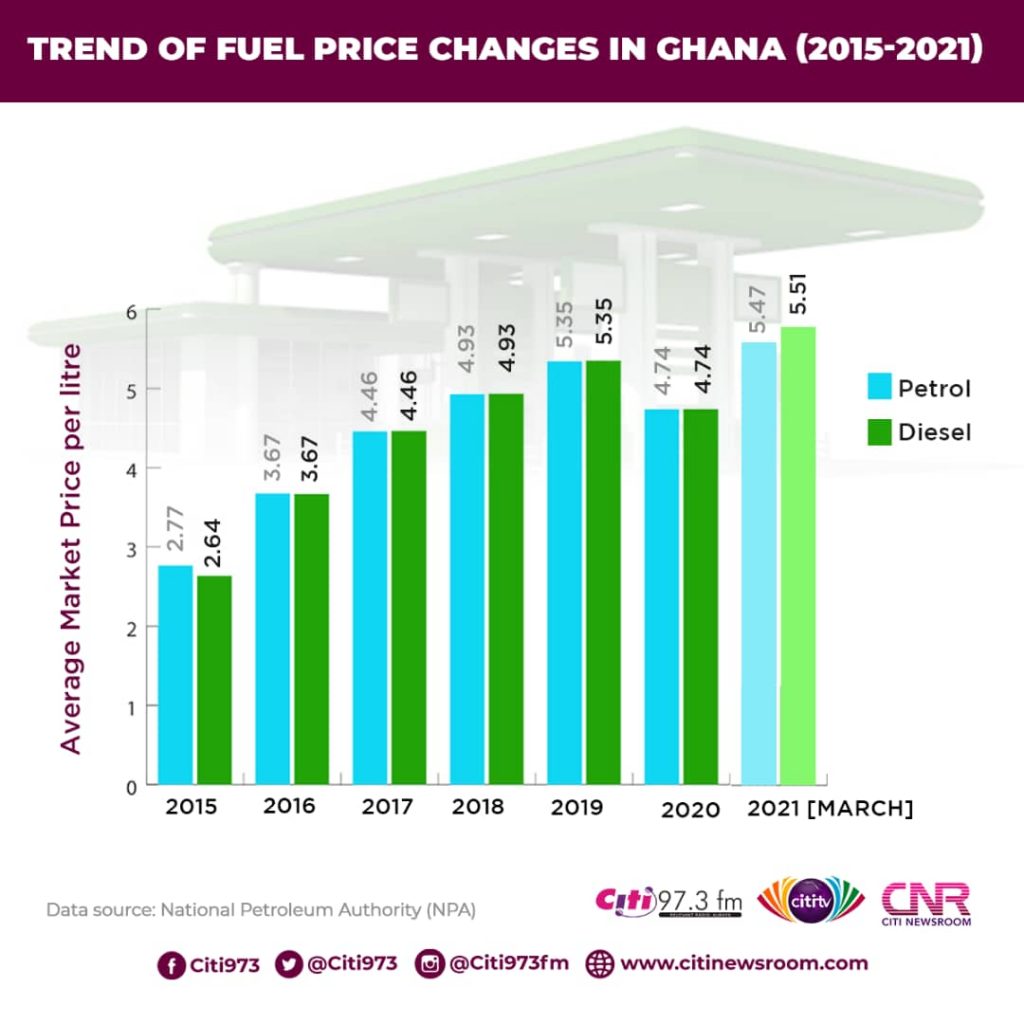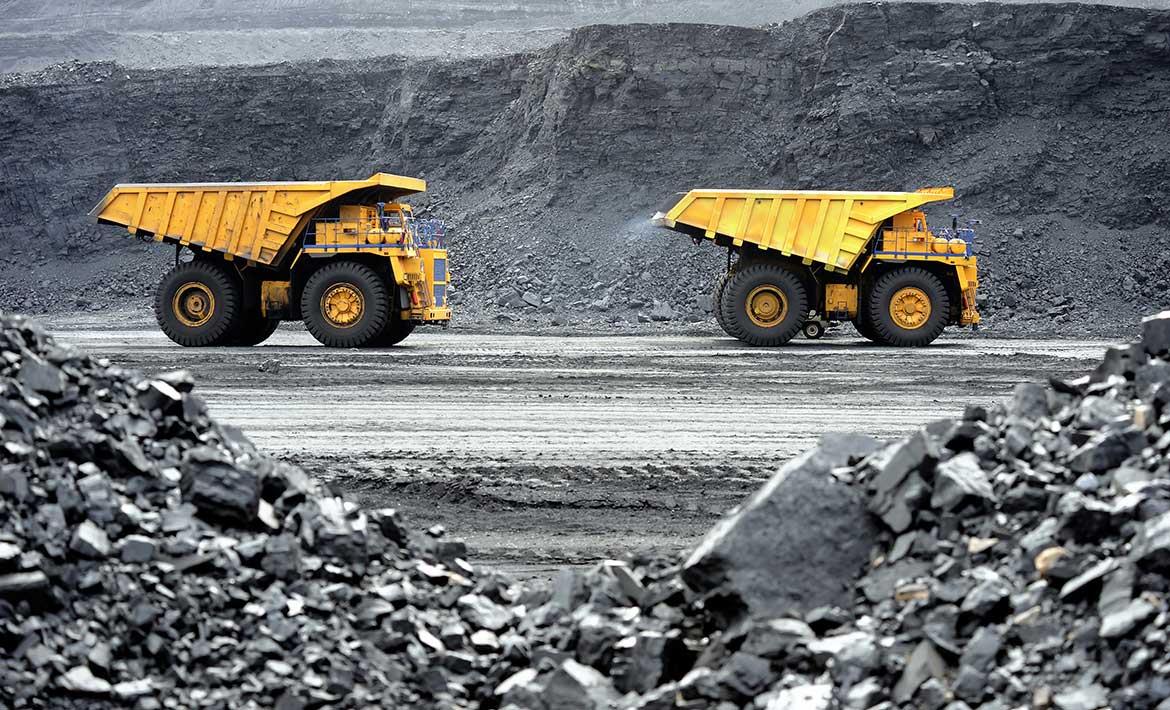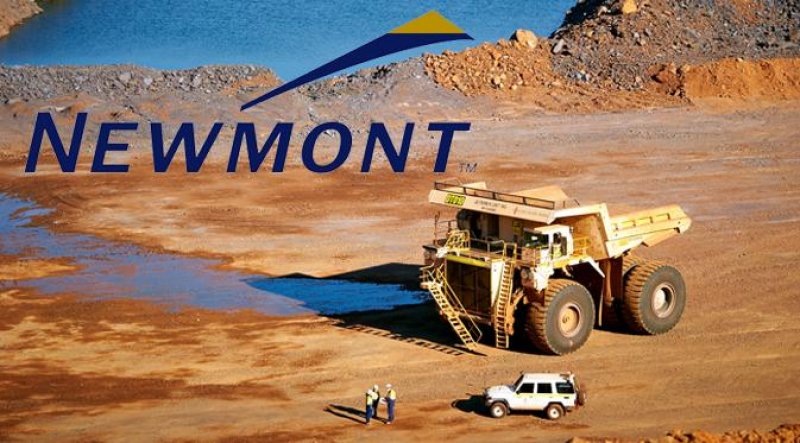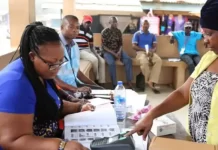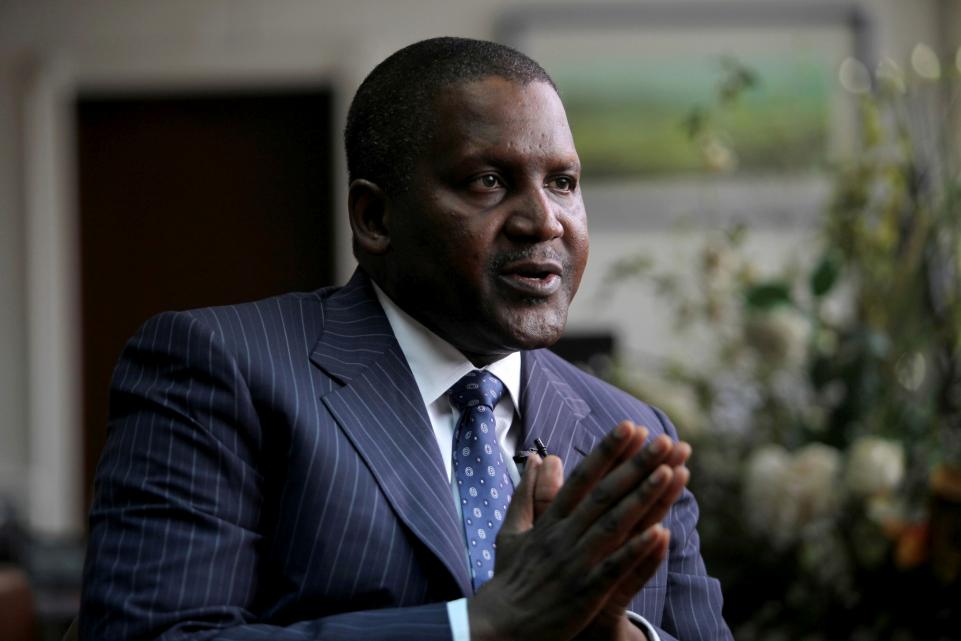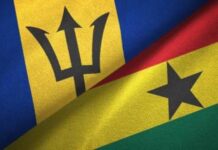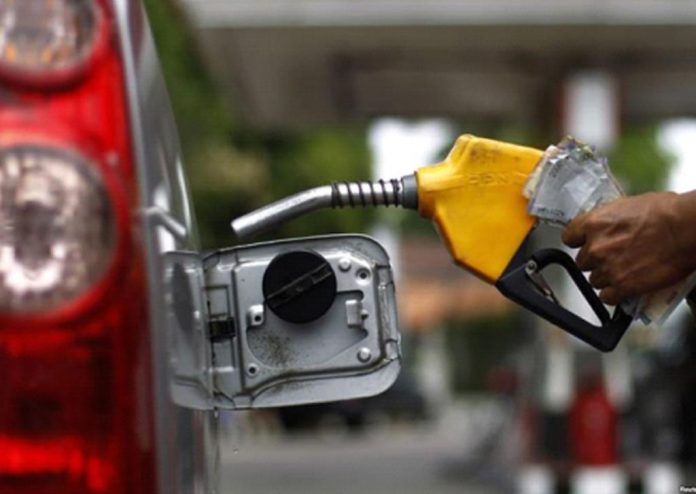
Fuel prices in the country have consistently seen a steady increase since the beginning of the year, sparking fears that consumers may end the year paying an all-time high rate per litre.
Current figures from the pumps show that prices of petrol and diesel which were both selling at an average price of GHS 4.7 per litre in December 2020, are now being sold at an average of GHS 5.74 at the pumps.
The Chamber of Petroleum Consumers (COPEC) has indicated that the percentage change in prices within the last two months is an 11% increase.
While many have already and continue to express their displeasure over the fast increasing price at the pumps, things do not appear to look better in the short to medium term.
This is because government has proposed a 5.7 percent increment in prices of petrol and diesel as part of new levies it is imposing on Ghanaians.
The 2021 budget as presented by Parliamentary Affairs Minister, Osei Kyei-Mensah-Bonsu last Friday introduced a new 10 pesewas Sanitation and Pollution Levy as well as a 20 pesewa levy to cater for charges on the country’s excess power capacity subject to parliamentary approval.
It is unclear if the factors influencing the price of fuel in the country are closely linked to global crude oil prices.
Petrol and diesel are the most patronized fuel products in Ghana, and any increase usually affects transport fares and impacts cost of general goods.
Below is an infographic of the price change in petrol and diesel since January:
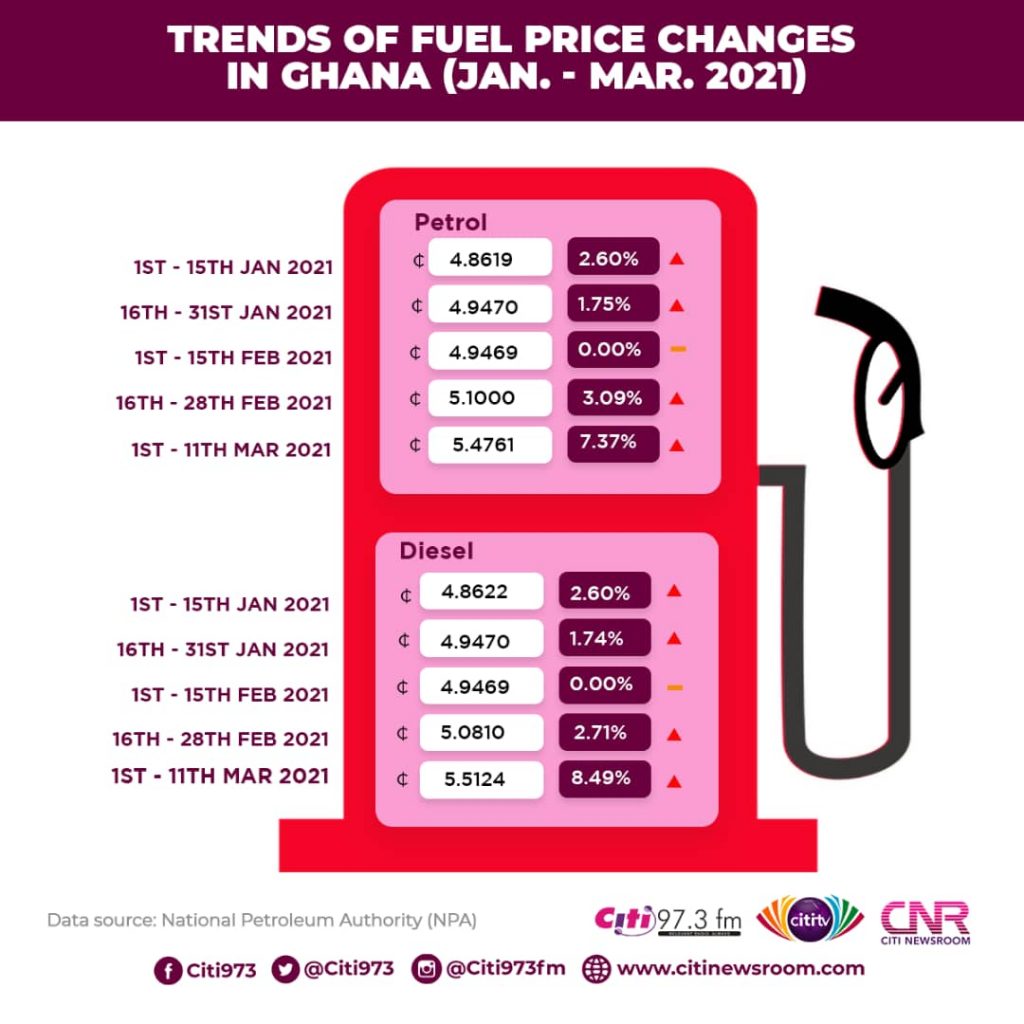
Based on historical data from the National Petroleum Authority (NPA) notice that since 2015, fuel prices have doubled; from an average of GHS 2.7 per litre then to GHS 5.4 per litre on average currently.
With the proposed new levies expected to further increase the amount, the Executive Secretary of COPEC, Duncan Amoah has called on parliament to kick against the government’s proposal to increase levies on petroleum products to ensure that Ghanaians are not overburdened.
Below is an infographic of the price change in petrol and diesel since 2015:
